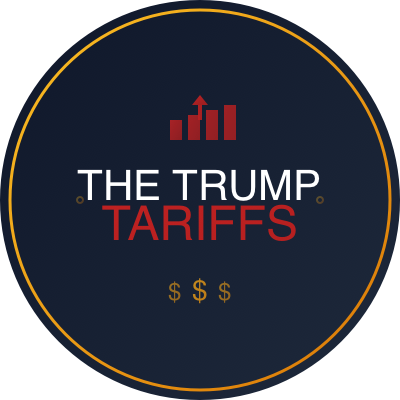NextFin news, On November 6, 2025, President Donald Trump addressed the media at the White House, warning of a “devastating” economic impact if the Supreme Court rules against the administration’s sweeping tariff program. The tariffs, imposed under the International Emergency Economic Powers Act (IEEPA), include punitive rates up to 145% on Chinese imports and reciprocal tariffs up to 50% on key trading partners. The Court is reviewing the legality of these tariffs following lawsuits challenging the president’s authority to impose taxes without explicit congressional approval. The hearings involve questions from both liberal and conservative justices, concentrating on whether the IEEPA grants broad tariff powers as currently exercised.
Trump emphasized that should the Court overturn the tariffs, his administration would need to develop a second version of the policy. This suggests an adaptation strategy rather than wholesale abandonment, hinging on alternative statutory authorities. Currently, tariffs have generated nearly $90 billion in customs revenue through September 2025, contributing to the White House’s objectives of reducing the federal deficit and promoting domestic industries.
The legal battle focuses primarily on three legislative sections underpinning tariff authority: Section 122, allowing a 15% tariff for up to 150 days without prior investigation to address balance-of-payments deficits; Section 232, which authorizes tariffs on national security grounds after a Department of Commerce investigation; and Section 301, empowering the U.S. Trade Representative to act against unfair trade practices and violations of agreements, with no explicit cap on tariff rates or duration.
According to the administration’s Solicitor General, the tariffs serve as regulatory measures integral to U.S. foreign policy goals, especially in economic competition with China, rather than simply as revenue-generating tools. This nuanced legal positioning reflects the administration’s strategy to defend its broad economic and geopolitical tariffs amid intensifying global trade tensions.
Analyzing the roots of this tariff program reveals multifaceted strategic aims: correcting perceived chronic trade imbalances, protecting threatened U.S. industries such as steel and semiconductors, and leveraging economic pressure in geopolitically sensitive trade relations, primarily with China and select Southeast Asian countries. The administration’s 2025 reciprocal tariff policy continues a trend seen since Trump’s first term but expands in scale and scope, integrating restrictive “poison pill” clauses in trade agreements with countries like Malaysia and Cambodia, designed to prevent these nations from deepening economic ties with China under threat of tariff reinstatement.
The implications of a Supreme Court ruling invalidating the current tariffs would be profound. Economically, firms reliant on tariff protections might face renewed competition from foreign imports, disrupting supply chains and domestic employment in protected sectors. The nearly $90 billion annual tariff revenue also constitutes a significant fiscal inflow supporting Trump’s tax and deficit reduction policies, which would be jeopardized. Politically, a ruling against the tariffs risks undermining the administration’s tough stance on Chinese trade practices, potentially weakening its leverage in ongoing geopolitical disputes.
Nevertheless, the administration’s publicly disclosed contingency plans leverage multiple statutory mechanisms to circumvent a complete rollback. Section 122’s ability to impose immediate tariffs for balance-of-payments concerns without prior investigation offers a rapid-response tool, albeit with lower tariff ceilings and temporal limits. Section 232’s focus on national security grounds, extending tariffs on metals and strategic goods, aligns with broader security narratives driving U.S. industrial policy and remains legally robust after Department of Commerce investigations. Section 301 investigations targeting unfair trade practices remain flexible and potent tools for sustained tariff application, despite potential World Trade Organization (WTO) dispute risks.
This layered legal and policy approach indicates the administration’s intent to maintain a robust tariff framework through adaptive means rather than retreat, reflecting broader trends of economic nationalism and strategic decoupling. According to trade experts, while the precise form of tariff application may shift to fit legal requirements, the overall direction toward protecting U.S. economic interests and coercing trading partners—particularly China—to modify their policies will persist.
Looking forward, the Supreme Court’s ruling will be a critical inflection point, not merely for domestic trade policy but also for the global trade architecture. A ruling upholding the administration’s interpretation would cement expansive presidential powers over tariffs under IEEPA, likely emboldening future administrations to use tariffs as main instruments of economic and foreign policy. Conversely, a ruling against could force a recalibration of U.S. trade tools, potentially increasing Congressional involvement or pushing reliance on more narrowly tailored legal provisions.
In the global context, persistent U.S. tariffs and the introduction of restrictive clauses in bilateral agreements risk increasing fragmentation in trade relationships and supply chain realignments. The “poison pill” provisions embedded in agreements with Malaysia and Cambodia exemplify attempts to subordinate partner countries’ foreign economic policy autonomy under U.S. strategic imperatives. This dynamic threatens ASEAN countries’ delicate balancing act between the U.S. and China, especially as the China-ASEAN Free Trade Area expands and multilateralism faces severe challenges.
For U.S. industries, the continuation or adaptation of tariff regimes may prompt shifts in investment, sourcing, and innovation strategies to mitigate tariff costs or capitalize on protective measures. Energy, metals, technology, and advanced manufacturing sectors are likely to remain focal points of policy-driven restructuring, while sectors dependent on global supply chains may lobby intensively for clarity and stability in tariff implementation.
In sum, the ongoing Supreme Court case captures more than a legal dispute; it encapsulates the tensions intrinsic to America’s evolving trade strategy under the Trump administration—balancing assertive economic sovereignty with complex legal constraints, fiscal imperatives, and geopolitical contests. The administration’s readiness to adapt tariff policy signals a commitment to leveraging trade tools as strategic levers well beyond 2025, shaping the trajectory of U.S. trade and global economic relations for years to come.
According to reports by Mezha.net and corroborated by insights from international trade scholars, the coming weeks will prove decisive in determining the shape and reach of U.S. tariff policy under the current presidency. Businesses, policymakers, and international partners will watch closely as the highest court’s decision unfolds, potentially redrawing the boundaries of executive trade authority at a pivotal moment in global economic realignment.
Explore more exclusive insights at nextfin.ai.

